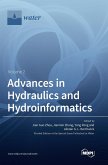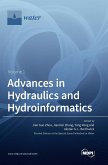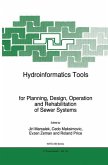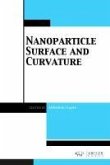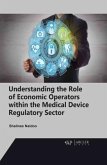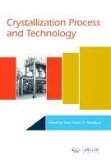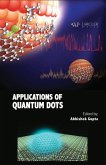The intent of this book is to provide the reader a basic knowledge over some principles in the field of hydroinformatics. Each chapter provides some insight over common concepts in the area, and some examples clarify the application of the developed concepts.The book contains Two Sections and is divided into 18 chapters. Section One covers 13 Chapters and Chapters 14-18 are covered in Section Two.The first chapter provides a brief introduction to the usefulness of hydroinformatics as an applied science. It also gives some insight on the integration between hydroinformatics and society, how one exchange information with the other, additionally how hydroinformatics is beneficial to the society is a whole.The second chapter gives an overview of how the management of watershed interacts between the management teams, government agencies and the society. We also mention common issues that should be addressed when planning and operating water systemsIn the third chapter, the issue of data acquiring and processing is addressed. Some common techniques and instrumentation to collect data from rainfall, wind, temperature and terrain are presented, as well as some advantages and disadvantages of common techniques.Chapter 4 introduces modelling techniques of the area, and common mathematical methods used for different models. Special attention is given at the beginning of the chapter to the UML (Unified Modelling Language) framework, as a potential tool for the development of models.Chapters 5 and 6 give an introduction into two common modelling approaches in the field of hydroinformatics. Water quantities in a river, lake or groundwater reservoir can be predicted in relation in relation to its movement in the surface from one point to the other (flow routing), or to the amount of evaporation, transpiration and rainfall (rainfall-runoff). Some common modelling techniques are mentioned, and applied examples clarifies some cases.In chapter 7 the modelling of dams is presented. Some common structures and instrumentations are mentioned, with their specific properties and applications, as well as some examples.Chapters 8 and 9 are related to the presence of other materials in a water system. If it is necessary to know how the material is transported in the water system, then the focus is the Sediment Transport Modelling (Section 8). On the other hand, if the focus is how the material contaminates the water system and changes its use, for instance from drinking water to a degraded system, then water quality modelling (Section 9) is an useful tool to be applied. Data-based modelling is presented in chapters 10, 11 and 12. While section 10 just gives a brief introduction of what actually is the data-based modelling technique, section 11 shows the application of some linear models, while section 1^2 deals with some common non-linear techniques, some of them still in a very early stage of development.Suggestions for a deeper understanding of some concepts in the area is addressed in chapter 13. Chapters 14-17 bring together research studies and papers, which illustrate some of the developments and applications in the field of hydroinformatics and also give a way forward for future research and application.I hope that this will help to further raise the awareness of the subject and its developments and applications.
Hinweis: Dieser Artikel kann nur an eine deutsche Lieferadresse ausgeliefert werden.
Hinweis: Dieser Artikel kann nur an eine deutsche Lieferadresse ausgeliefert werden.


